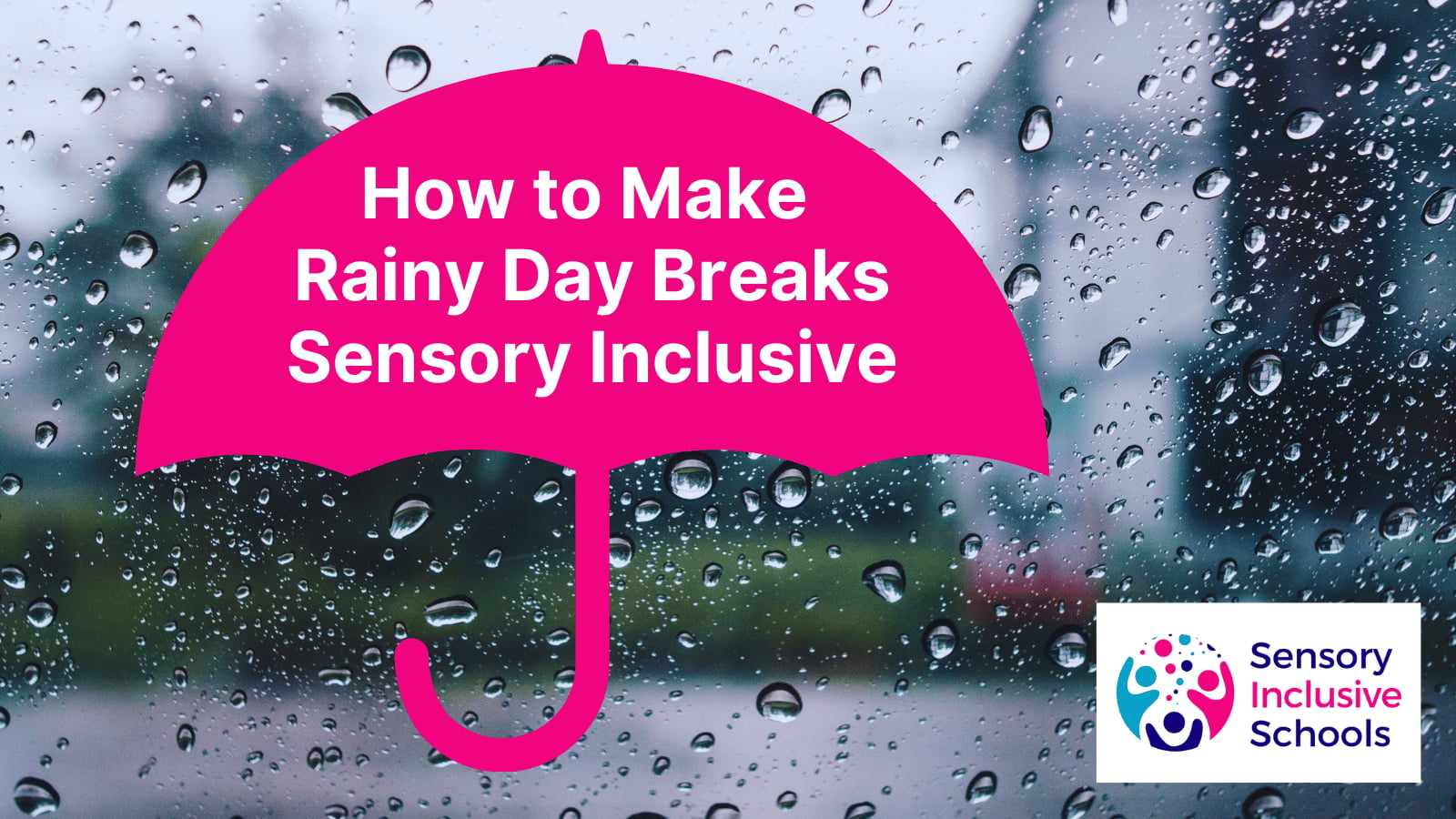Keep building your sensory inclusion skills
Find online sensory training and webinars for teachers and school staff, packed with practical strategies to make your classrooms more inclusive for every student.
8 January 2025

Winter months bring unpredictable weather, and rainy days often mean students are stuck indoors during breaks. For many children, this change can lead to sensory overwhelm. The increase in noise levels, the lack of space for movement, and the absence of outdoor sensory input can leave some students dysregulated and struggling to focus for the rest of the day. With a few simple adjustments, schools can make indoor breaks more sensory inclusive, ensuring all students have opportunities to regulate and recharge.
Rainy days mean:
Here are some practical, low-cost ideas to create sensory-friendly spaces and activities for rainy days:
Designate a quiet area where students can take a sensory break. Play calming nature-based sounds like gentle rainfall, ocean waves, or crackling fire noises. Pair this auditory input with dim lighting, cosy seating, and optional tools like weighted lap pads. This space can be a refuge for students who feel overwhelmed by the noise and activity of indoor play.
Even in limited indoor spaces, you can set up movement activities that provide proprioceptive input to help students self-regulate. Try these simple ideas:
Provide a range of fidget tools that can be used during indoor breaks. Some examples include stress balls, textured toys, or stretchy bands. For younger students, consider themed options like snowball-shaped stress balls for a fun, seasonal touch.
For students who prefer calm, structured activities, set up quiet corners with:
Organise games that promote movement without overwhelming the senses, such as:
Rainy day breaks don’t have to mean sensory overload for students. By creating calming zones, offering opportunities for proprioceptive input, and providing structured activities, schools can turn indoor breaks into a positive experience. These small adjustments can make a big difference in helping all students regulate their senses and return to class feeling ready to learn.
Would you like to learn more about making your school inclusive for all students’ sensory needs? Find out about the Sensory Inclusive Schools packages of training and support for UK primary and secondary schools here.